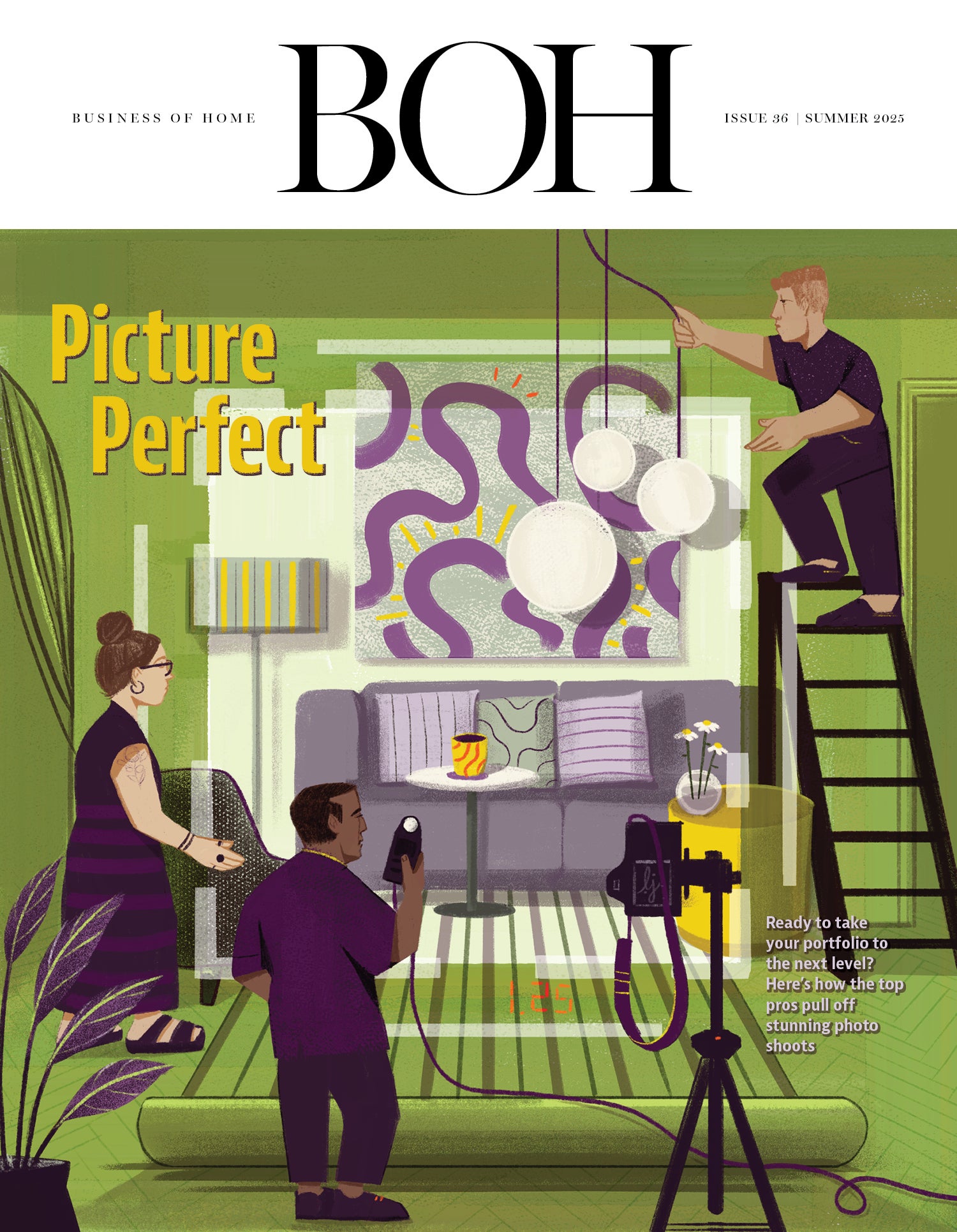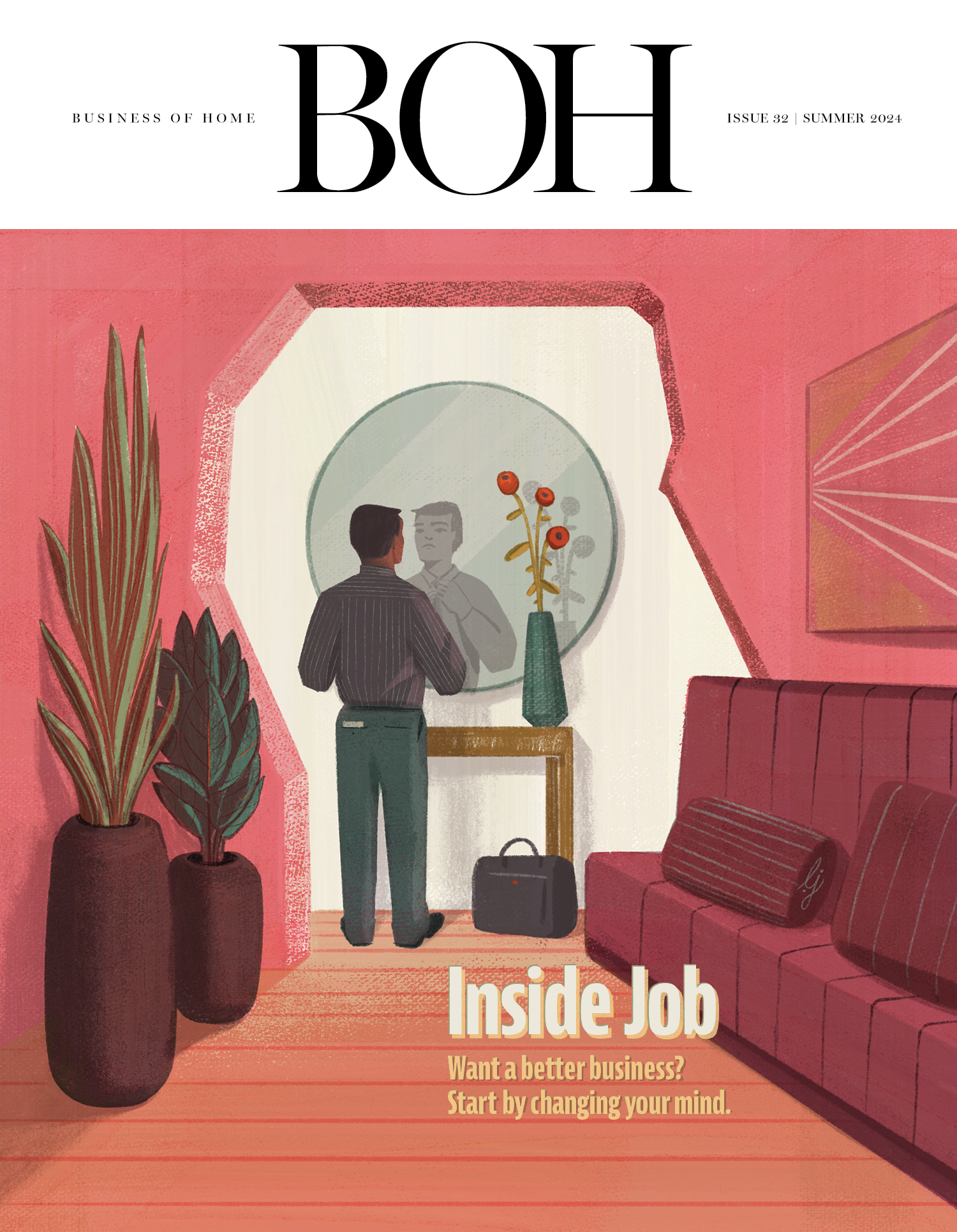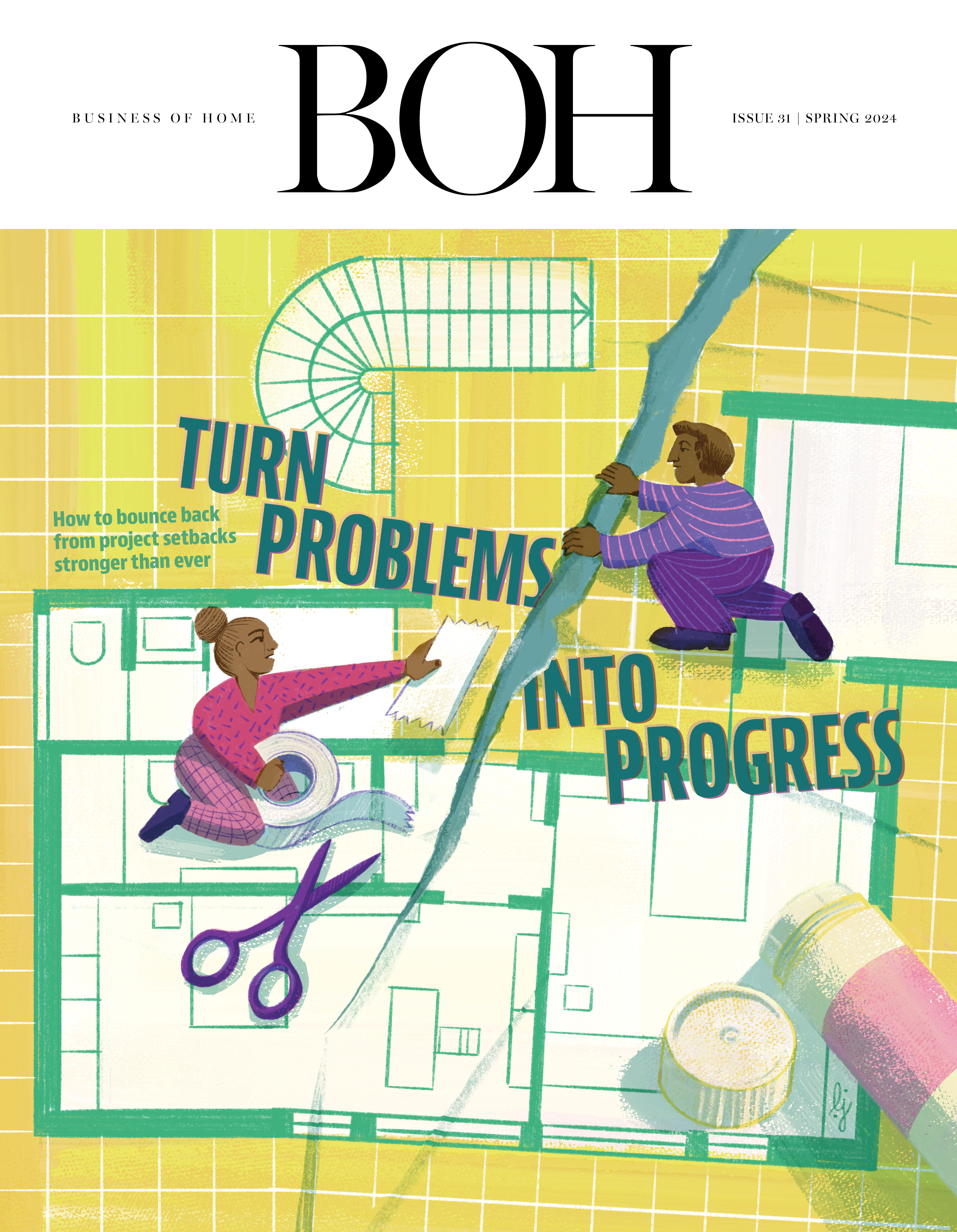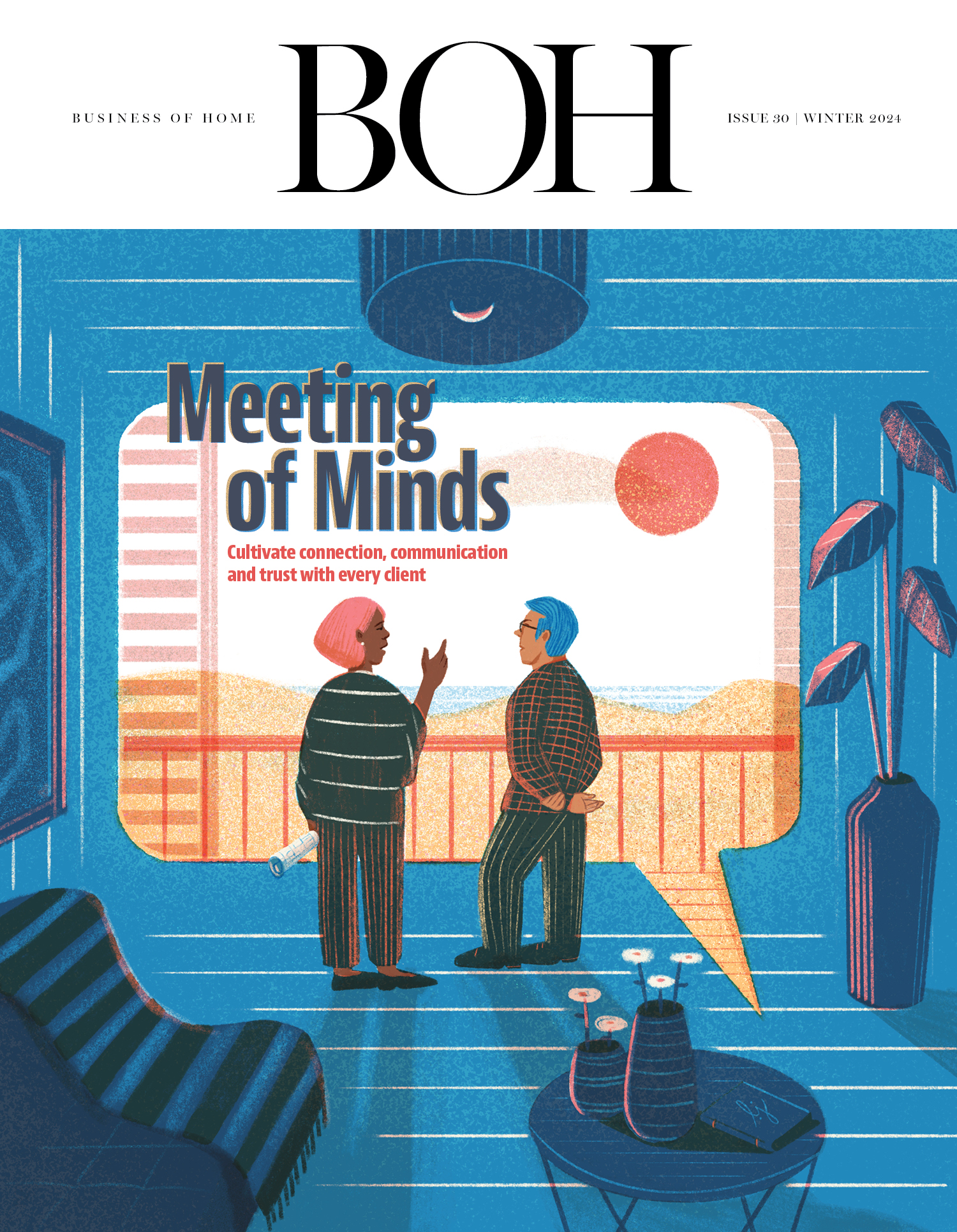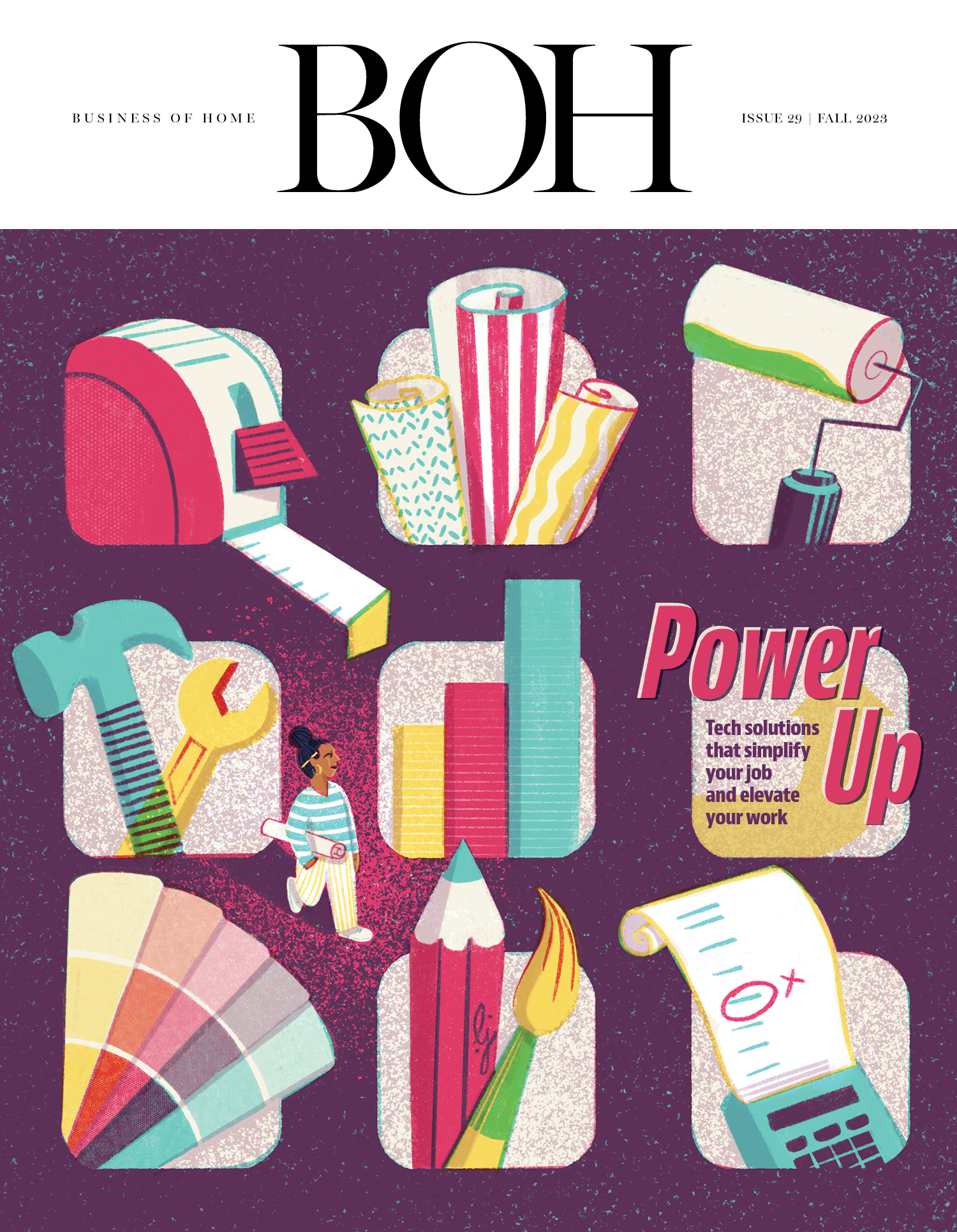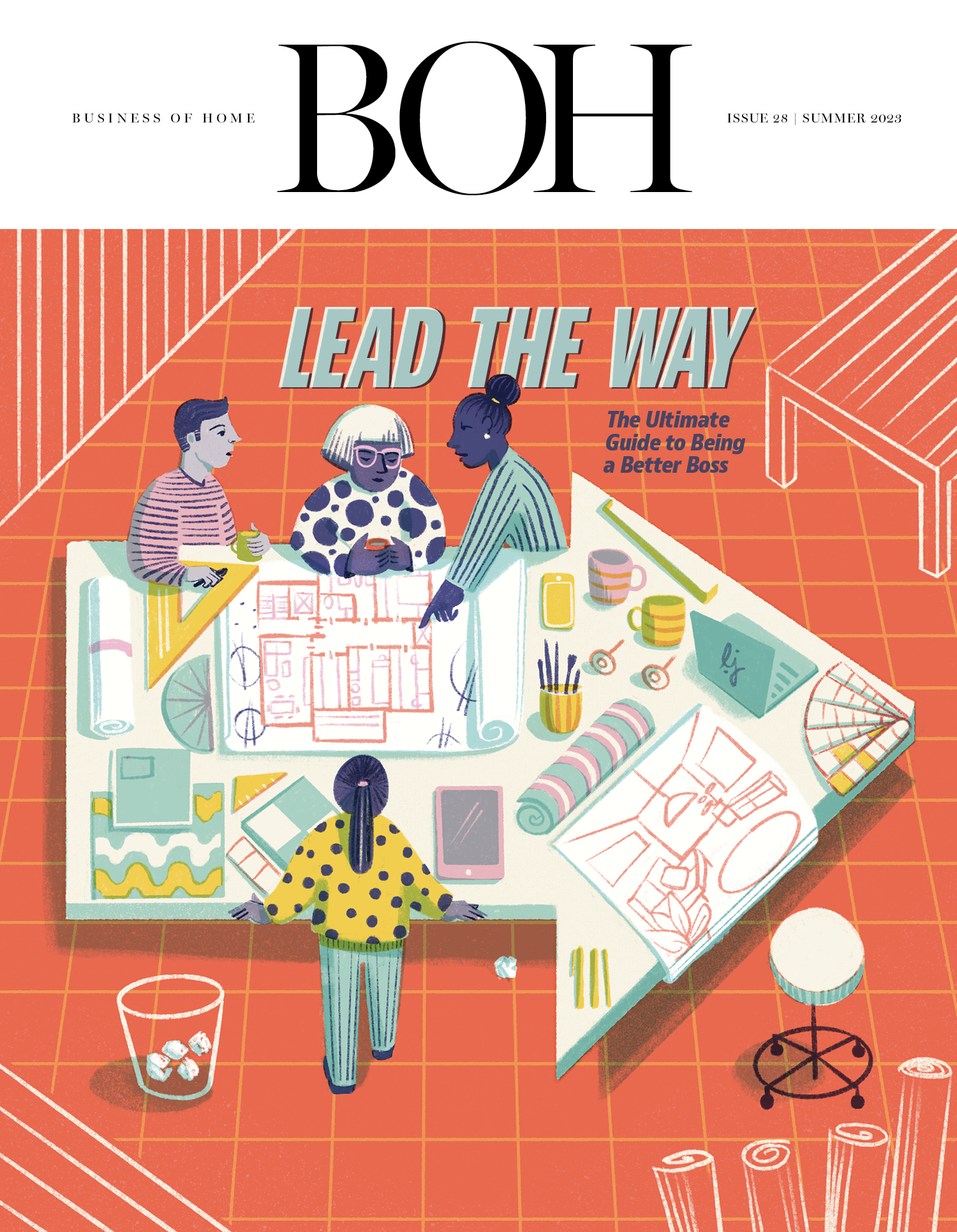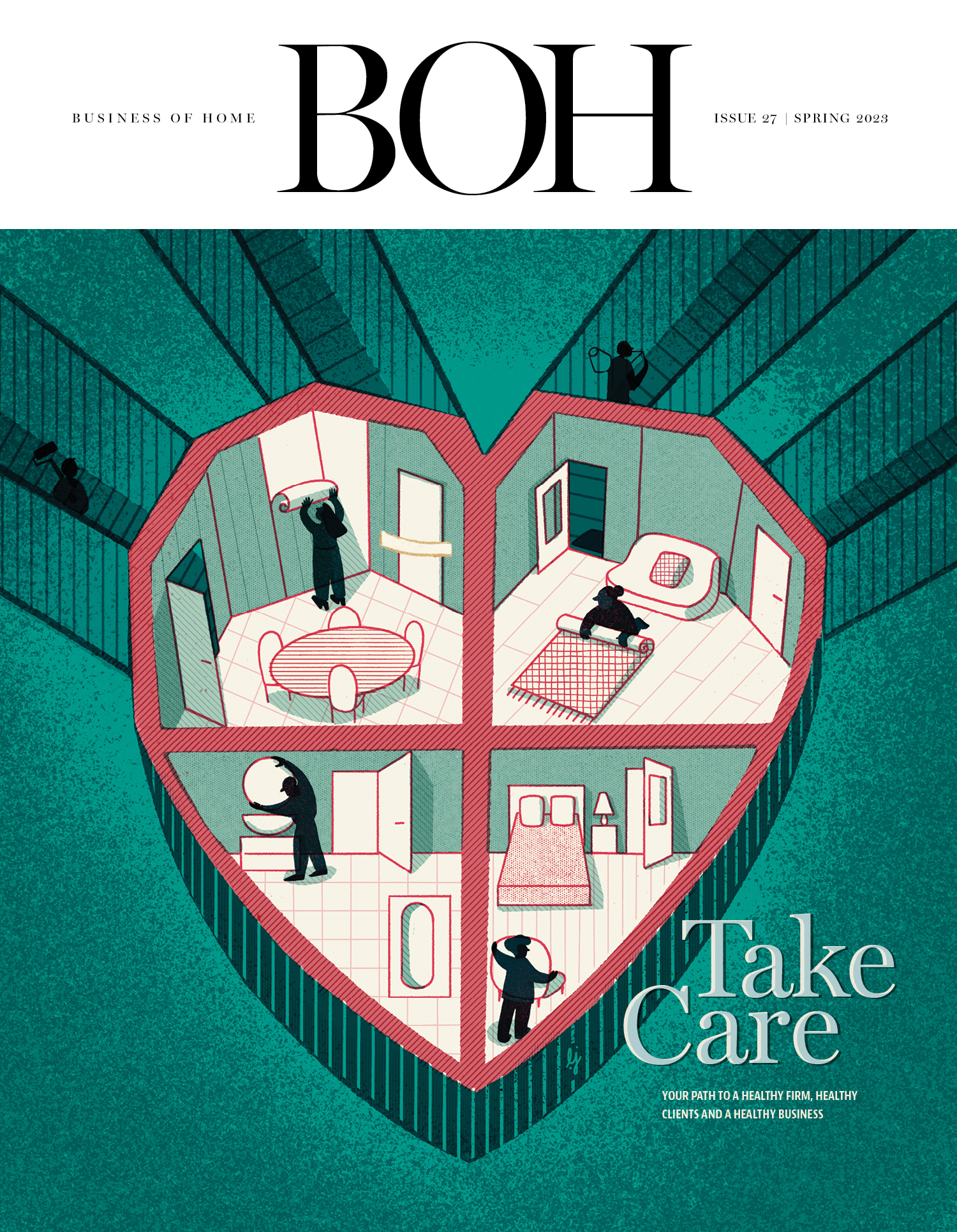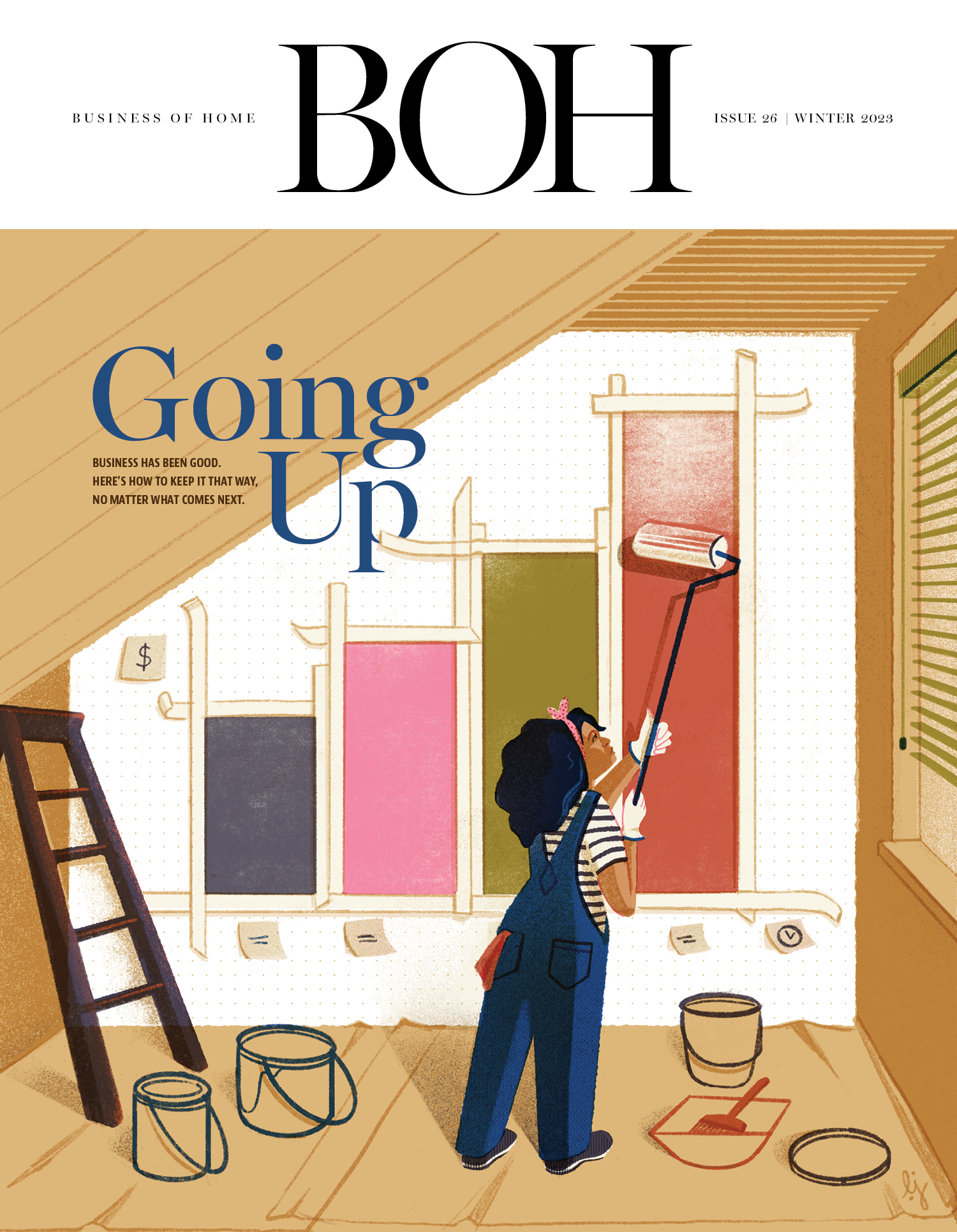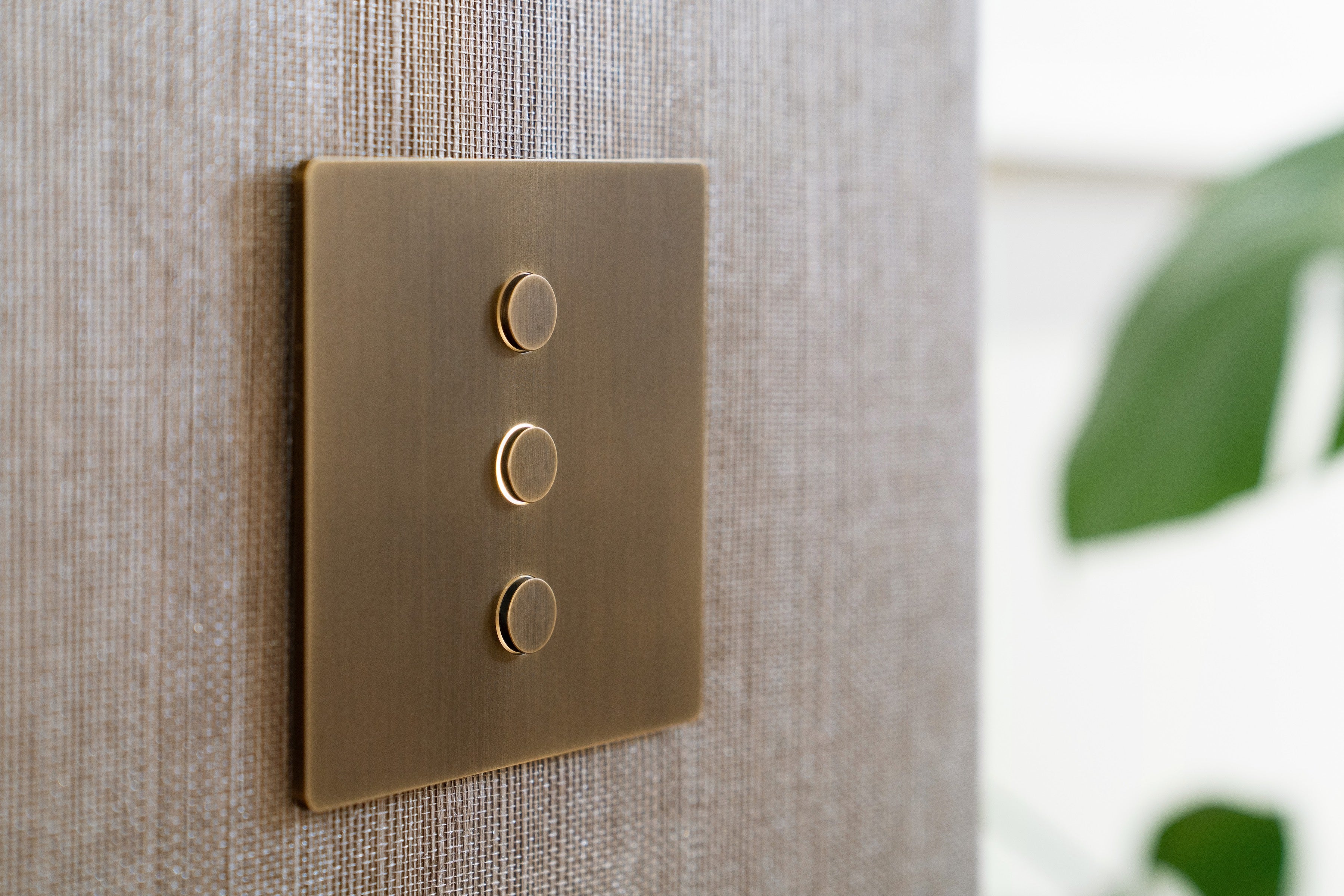Lutron’s custom motorized window treatments may often steal the spotlight bestowed by its chic museum-grade architectural fixtures, but behind both of these luxe home accoutrements, another simple yet sophisticated innovation is in charge: Lutron’s controls. With streamlined aesthetics that blend seamlessly into an interior, whether wall-mounted or placed on a desktop, these palm-size powerhouses transform lighting and windowcovering settings with the touch of a button. For a complete home system, they’re the essential piece that ties everything together. And they’ve been integral to the brand’s history from the very beginning.
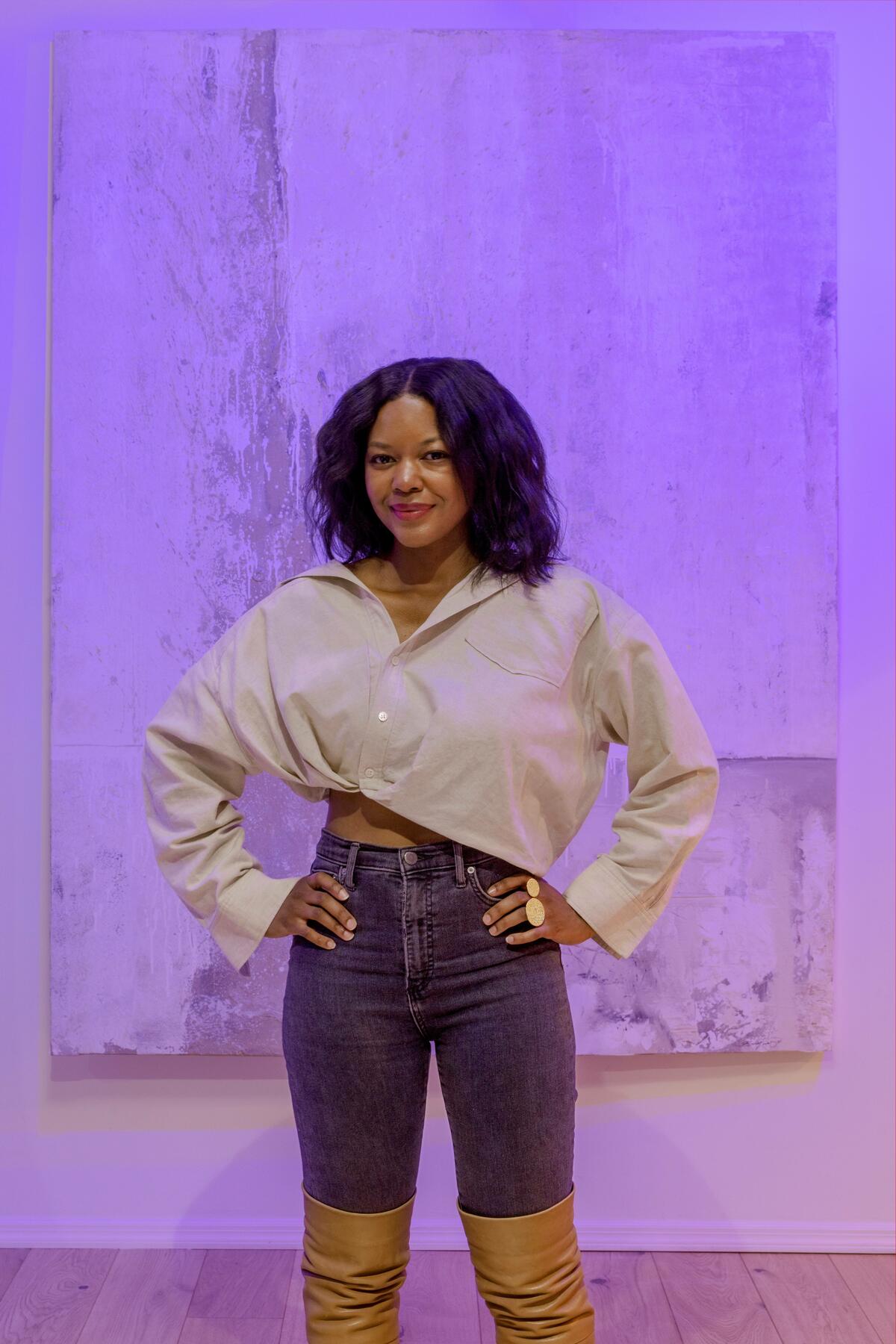
“The founder of Lutron, Joel Spira, invented the rotary dimmer in 1959,” says Cecilia Ramos, senior director of architectural markets for the company. At first, this fundamental item was sold not at hardware stores next to the lightbulbs but marketed to women in department stores, just steps from the jewelry and perfume—a placement that underscored its potential as a decorative as well as utilitarian tool. So commonplace now that it’s an afterthought, the groundbreaking creation—versions of which are included in the collections of the Museum of Modern Art and the Cooper-Hewitt National Design Museum—revolutionized the way light is experienced in the home, leapfrogging from the jarring flash of the on/off switch to a more modulated experience that emulates how natural light occurs throughout the day. Fast-forward to the present, and Lutron is still combining ease with luxurious good looks. “There are two ways we think about controls,” continues Ramos. “The aesthetics of the keypad you interface with to create different ambiances, and the technology behind it that makes everything work in unison, be it smart lighting or intelligent shades.” Lutron meets those demands at different levels, from wireless handheld remotes to wired wall panels in premium finishes. For advanced customization, there’s even an app. In fact, Lutron offers two: one that’s oriented to consumers and another to the trade.
PICO
Agile, intuitive and affordable, the battery-powered Pico wireless remote is an indispensable device in pretty much any room—within hand’s reach or slotted into a faceplate on the wall. Compatible with a wide variety of Lutron lighting, shades and automation systems and available in up to five colors with a matte or gloss finish, it features two to four buttons that can be configured however you please. Designer Dani Arps depends on hers to click through various lighting qualities in her Midtown Manhattan office as instinctively as she’d channel-surf while watching TV.
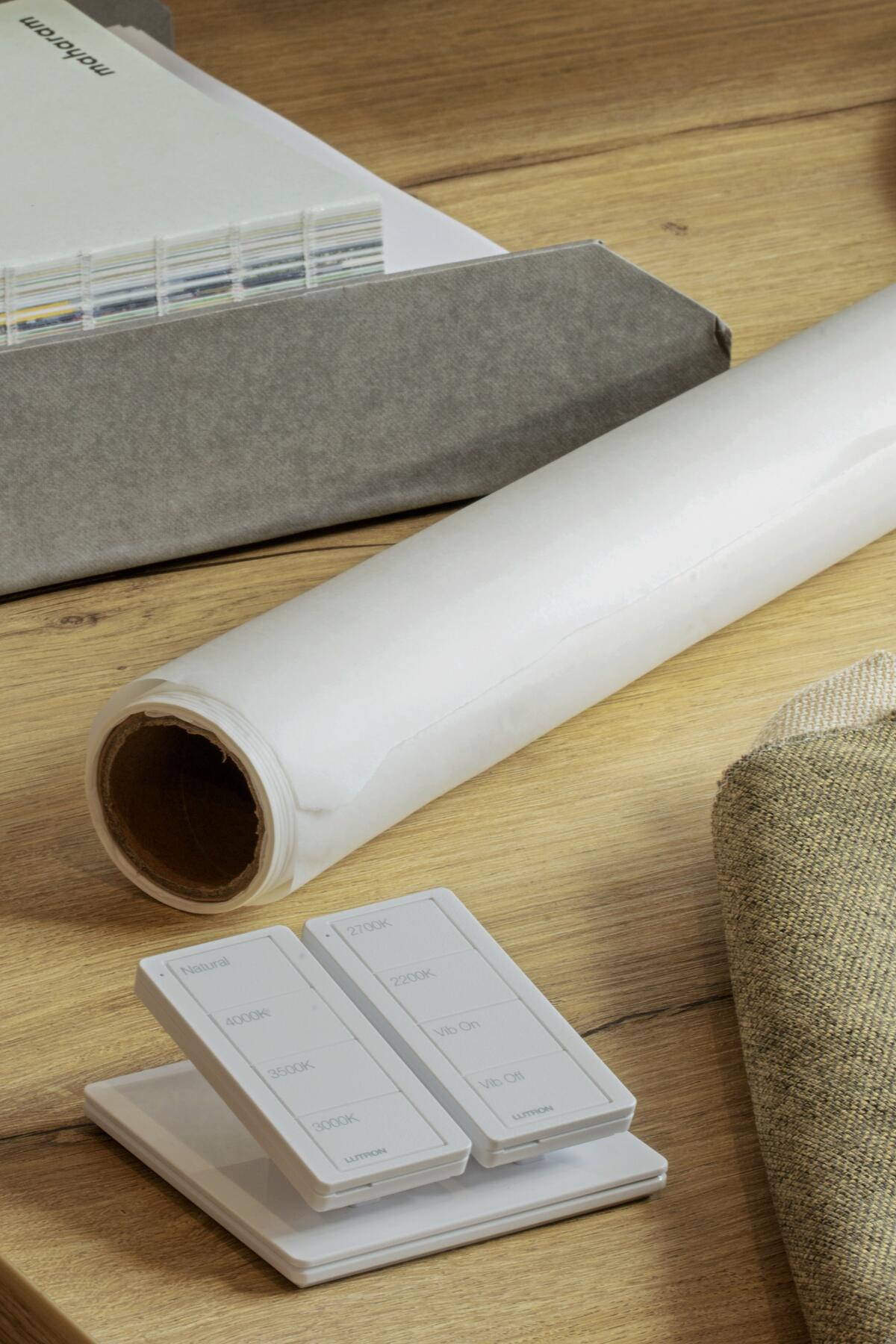
“I personally find it extremely convenient and pretty cool. Press the buttons and you change the color and the temperature of the light,” she says. Synced with Lutron Ketra lighting, her crisp white Pico remotes are customized to not only illuminate her studio—her everyday mode, aka “Natural”—but also replicate different environments. “Depending on the materials I’m presenting and the type of project, I can select a warmer setting like 2,700 for a residence or a cooler one like 3,500 for commercial properties, which is my area of specialty, to gauge how finishes, decor and artwork will read. It’s like having your own test lab.” Proof of the designer’s precise approach to her work (and to her workspace), the majority of Arps’s button labels are actual Kelvin numbers, from 2,200K to 4,000K, but Lutron will custom-engrave all its controls and keypads with any word—or icon—you want.
“Labels are usually organized in one of two categories,” says Ramos. “Scene-based controls might designate Morning, Afternoon and Evening, for example, while zone-based controls could call out specific fixtures, like Downlights, Chandelier and Under-Cabinet.” At cosmopolitan locations and Lutron’s luxury hotel partners around the world, graphics like suns, crescent moons, showerheads and lightbulbs on its Palladiom keypads speak a common language.
PALLADIOM
Sharing a name and colorways with Lutron’s stylish motorized roller shade brackets, the hardwired, wall-mounted Palladiom keypad is crafted from metal, glass or polymer in rectangular or square proportions. Contemporary material choices include Polished Graphite, Antique Brass and other architectural finishes. As part of Palladiom’s uniplanar design, buttons lie flush with the faceplate for a smooth, unobtrusive surface, and dynamic backlighting automatically adjusts to the surroundings so that the labels on the relatively large rectangular buttons remain accessible and easy to read even in darkness—emitting a soft, satisfying click when pressed.
“The Palladiom has a sleek, sharp-edged look, and the lettering glows, but never glares, in response to the levels detected by its daylight sensor,” says Ramos. It’s the kind of subtle, quality-of-life accommodation that Lutron excels at—one that’s so intuitive to the device that users forget it could ever be any other way. “Luxury of that type should almost be unseen,” she continues. “If you don’t even notice that the keypad dims down at night, then we’ve done our job right.”
“In a recent residential project, I used the Palladiom control panel and connected it with the roller shades for a beautifully synchronized system,” adds Arps, who also coordinates a Palladiom wall-mounted keypad with the practical Pico remotes peppered throughout her office.
ALISSE
Lutron’s latest, and the height of luxury, the Alisse keypad translates a traditional form to today’s interiors. Raised ever so slightly on a square faceplate, its small, round, solid brass buttons recall a long-ago industrial era yet also feel ornate and completely au courant. “The style definitely nods to midcentury modern design,” says Ramos—if not even further back in time. Hand-finished to retain traces of the artisan’s touch, Alisse’s milled metal panels would not be out of place in the art deco apartment buildings of America’s great cities. But halo lighting behind the buttons situates the style squarely in the 21st century. “Designers are drawn to Alisse—in Aged Bronze, Satin Nickel, Snow White, Matte Black and more—because it’s like jewelry for the wall that complements a variety of interiors, as well as accents like picture frames and mirrors,” she says.
SYNCHRONIZED SIMPLICITY
Whether it’s a wireless remote on the nightstand or a wired keypad above the kitchen counter, Lutron’s controls offer defined settings to do everything from raise the shades in the morning to dim the lights for a nightcap. To enhance the ambiance even more, Lutron syncs its controls with corresponding apps. “It’s super fun because they offer the full spectrum—a rainbow of colors,” says Arps. “If you’re hosting a holiday dinner or a cocktail party, you can tune the LEDs to green, red, blue, any shade you could ever want.”
“The consumer app allows the end user to have the ultimate autonomy over their space and the ability to adjust as they go,” says Ramos. Like an alarm clock, it can schedule lights on and curtains open at 6 a.m., Monday through Friday, then let the family sleep in on weekends by relegating control to manual button press on the linked keypad. And if the original setting for, say, the primary bedroom didn’t take into account the seasonal time change, making tweaks via cellphone every morning while still snug under the covers isn’t the only recourse. “Change the light and shade levels on the app once, save those modifications, and the new setting is automatically pushed to the corresponding button on the wall panel,” she continues. When Ramos is running late at business dinners, she uses the app to lower the shades and turn down the lights to put her parrot, Goose, to bed. “It’s a powerful tool, and for pet owners, it’s peace of mind,” she says.
For the design community, the technology is all the more tailored: Last year, Lutron released its Luxury Experience app, which has separate sections for its lighting, shades and controls. Presenting the brand’s complete portfolio of products, it’s a detailed resource for inspiration. “We have a treasure trove of imagery, so designers can see what the different keypads look like and explore ideas with their client for how to name their lighting scenes,” says Ramos. “You can even start typing out the engravings.” A keypad designer function renders the selected panel in various materials, finishes and button permutations. “The designer can then export that image and use it in their packages and proposals.” Better yet, there’s no need to join a trade program or even register with an email address to access the app. “It’s free,” she adds. “Just download it from the store and you’re done.”
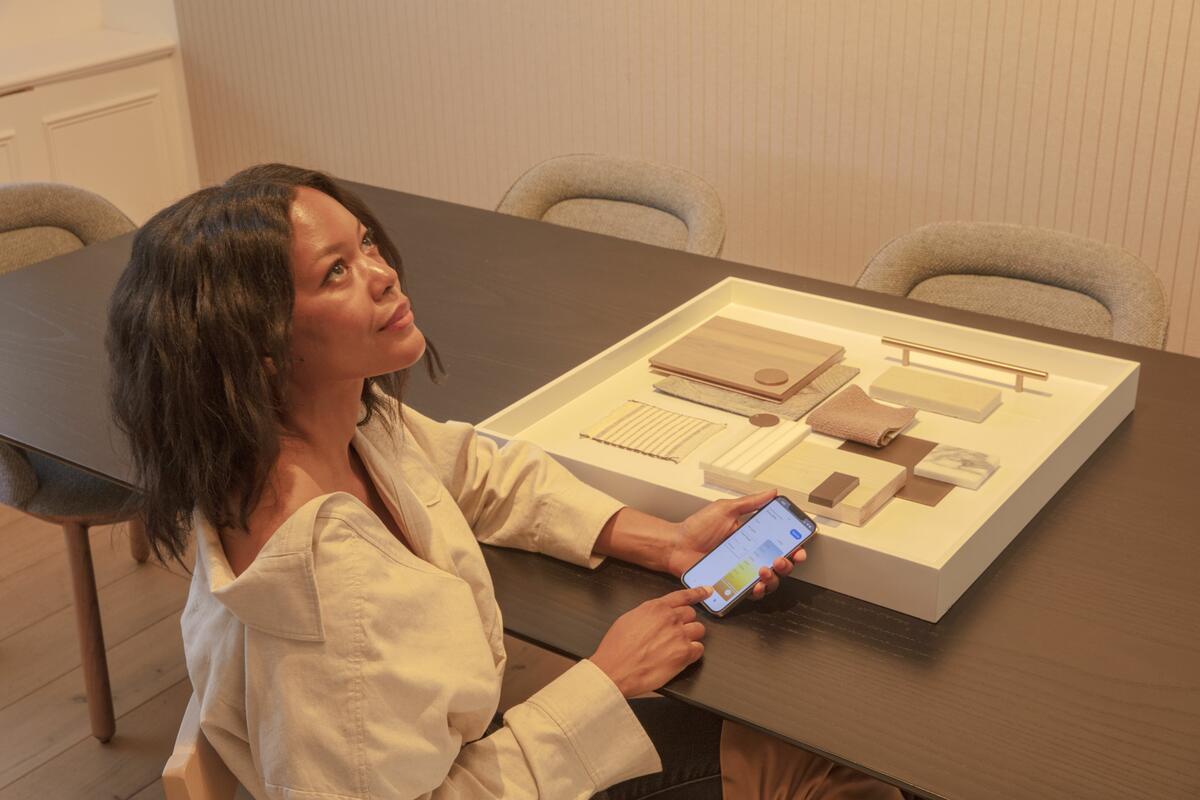
The convenience of apps and touchscreens is a given in today’s smart homes, but nothing can ever replace the basic human urge to press a button. “People still want that experience because it’s simple and intuitive,” says Ramos. Plus, it’s not as if every guest wants to download an app to turn on the lights in the kitchen just to sneak a midnight snack. “Lutron apps and keypads work hand in glove: The best-designed homes utilize both.” That could mean a singular all-off button at the entryway or a brushed-brass panel in the bedroom engraved with labels to “Entertain” and “Relax.” The aesthetics of the presentation and the degree of interaction are at the discretion of the designer and client. And recognizing that many beautiful homes are not from-the-ground-up builds but artful combinations of new and the old, Lutron’s controls are compatible with any brand of lighting. For Ramos, the objective is clear: “Our mission is to harmonize all the different components into a curated lighting experience.”
This story is a paid promotion and was created in partnership with Lutron.
Homepage image: Working in tandem with its automatic window treatments and almost any brand of lighting, Lutron’s intuitive keypads allow for convenient control while adding a decorative and functional accent to an interior | Courtesy of Lutron




